Dive Details
Location
Date
Wednesday 19 September 2018
Time
3:37pm - 4:59pm
Buddy
Louw Claassens
Seas
Wind chop
Visibility
5 to 10 metres
Duration
82 minutes
Maximum depth
13.2 m
Average depth
10.5 m
Water temperature
15°C
Dive Profile from Garmin Descent Mk1
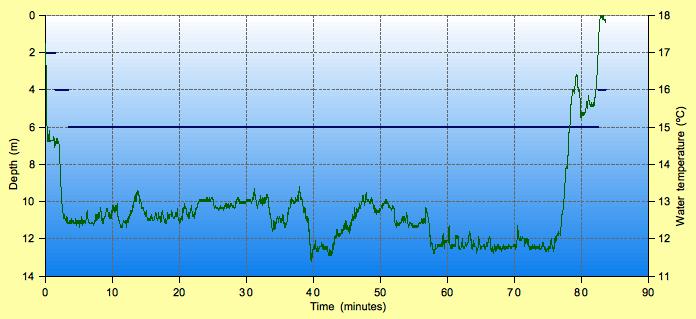
Tides at Botany Bay AEST
Note that tides at dive site may vary from above location.
High
4:12am
1.13m
Low
9:40am
0.71m
High
4:20pm
1.46m
Low
11:13pm
0.56m
Details
Today's dive was to take Louw Claassens, PhD candidate and seahorse researcher, on a dive to show her the sights of underwater Sydney. I'd promised her 3 species of seahorses, pygmy pipehorses, red-fingered anglerfish, and perhaps even a weedy seadragon. The weedy was on the top of her list but it was the one thing I couldn't be sure of. As we were getting ready to go in we bumped into Mike Scotland who was just coming out. He hadn't seen the great seahorse, the pot-bellied seahorses, or some of the anglerfish. This made me a little nervous but I was determined not to let Louw down.
While the forecast was for calm seas, the northerly wind was quite strong making the water surface look very choppy. We got in through the channel in front of the flagpoles, waded out, then surface swam out to the start of the East-West wall. We descended to visibility of around 10 metres although it looked a little dark due to the low sun. There was no current or surge and the water temperature was around 15°C. We turned right and headed east along the base of the wall.
Unfortunately, we'd descended just east of the basket star so I couldn't show it to Louw. We followed the base of the wall fairly quickly as I wanted to make sure we'd have time to find everything. We saw a few mourning and reaper cuttlefish along the way. As we swam past the area where "Cody", the yellow male pot-bellied seahorse, and yellowish White's seahorse had been, I had a quick look around for them before continuing.
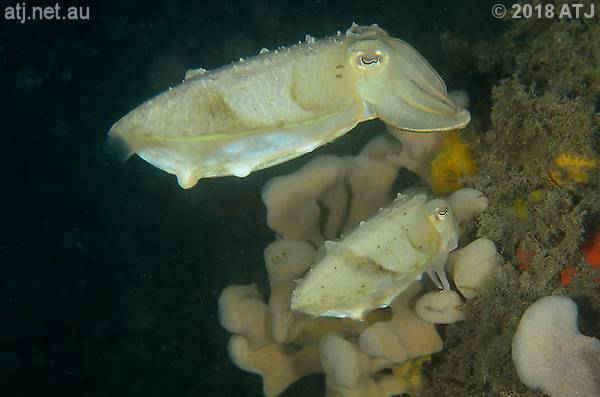
Mourning cuttlefish, Sepia plangon. 10.7 m.

Reaper cuttlfish, Sepia mestus. 10.9 m.
We got to the area where "Sandy", the female great seahorse has been. I looked on the sea tulip I'd seen her on Sunday, but she wasn't there. I looked around the area and eventually found her south-east of her previous spot in another set of sea tulips. I took some photographs and pointed her out to Louw. Louw was surprised how bug she was. After Louw had taken photographs we moved on.

Female great seahorse, Hippocampus kelloggi, ("Sandy"). 10.4 m.
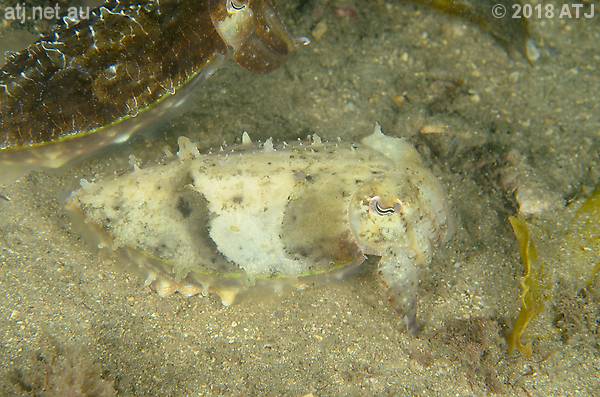
Mourning cuttlefish, Sepia plangon. 10.9 m.
When we got to near the end of the wall, I looked on the rock for the large orange red-fingered anglerfish. It was in the same spot it had been on Sunday. I took some photographs and pointed it out to Louw. She initially couldn't see it so I pointed to the eye and mouth and she was able to see it. She shook her head in wonder at the camouflage.
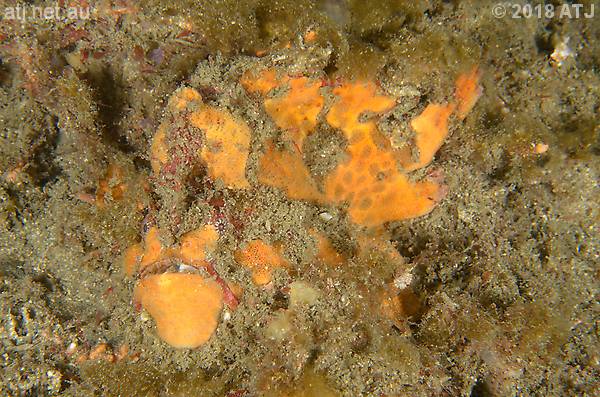
Red-fingered anglerfish, Porophryne erythrodactylus. 10.5 m.
We next moved to the adjacent rock to look for the pygmy pipehorses. After much searching I found all 4 of them, 2 males and 2 females (IL2018053101, IL2018071403). I pointed them out to Louw and while she was able to see them if she looked away she'd lose them again. We took photographs before continuing.
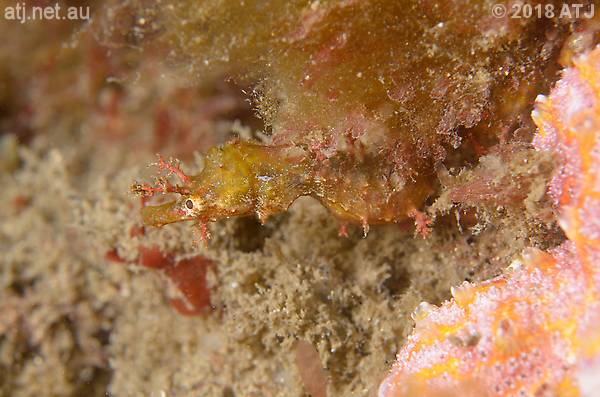
Female Sydney pygmy pipehorse, Idiotropiscis lumnitzeri, (IL2018053101). 10.3 m.
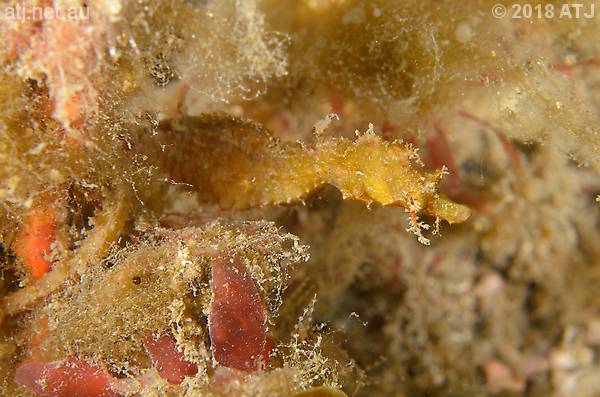
Male Sydney pygmy pipehorse, Idiotropiscis lumnitzeri. 10.3 m.
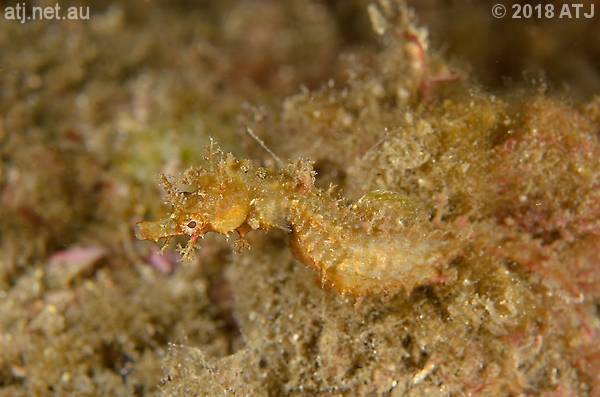
Male Sydney pygmy pipehorse, Idiotropiscis lumnitzeri. 10 m.

Female Sydney pygmy pipehorse, Idiotropiscis lumnitzeri, (IL2018071403). 10.1 m.
We cut the corner towards the NW-SE wall. I didn't cut it sharply enough and initially missed the rock with the small orange red-fingered anglerfish. It was getting a little dark but I still managed to navigate back to the rock and find the anglerfish. I pointed it out to Louw and once again she shook her head in wonder.
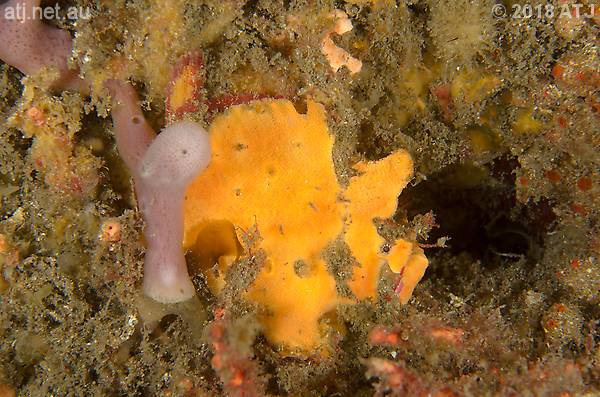
Red-fingered anglerfish, Porophryne erythrodactylus. 9.9 m.
We dropped to the bottom of the wall and swam past the rock where I'd spotted a pair of pygmy pipehorses last Friday. I wasn't able to find them so we moved on. I kept an eye out on the sand for weedy seadragons.
We continued along the reef. I didn't think to go and look for the grey red-fingered anglerfish in the gap and we just continued on past Split Rock to the slope under Seahorse Rock. I looked for the brown female White's seahorse and initially couldn't find her. I eventually found her hidden in one of the orange finger sponges.
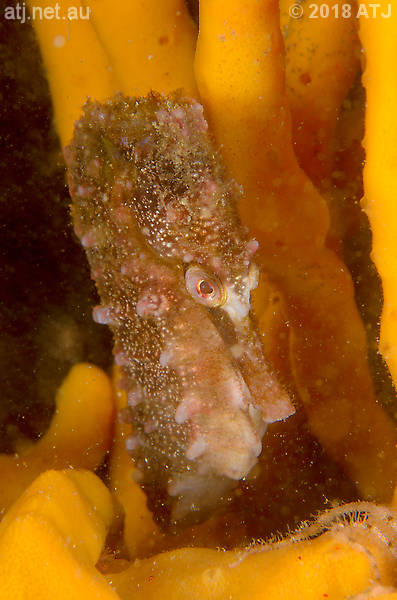
Female White's seahorse, Hippocampus whitei. 10.2 m.
We headed to the top of the start of the Deep Wall. I first checked for grey red-fingered anglerfish that Joe spotted on the second rock last Sunday. I took a few photographs and left Louw to photograph it while I looked for the pygmy pipehorses. I hadn't been able to find them on Sunday. Today I managed to find both of them. The female was down very low and the male was just to the left of her in an alga that was flapping around.
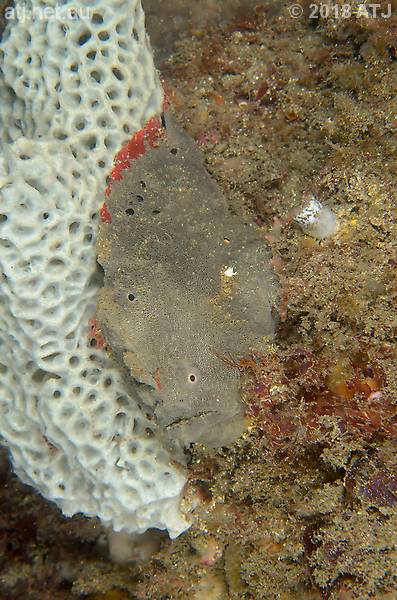
Red-fingered anglerfish, Porophryne erythrodactylus. 11 m.
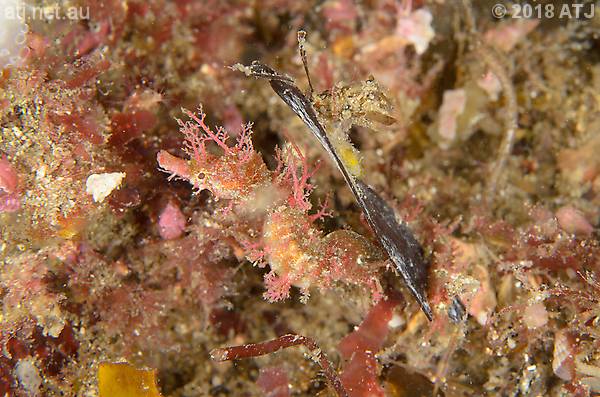
Female Sydney pygmy pipehorse, Idiotropiscis lumnitzeri, (IL2018072702). 11.2 m.

Male Sydney pygmy pipehorse, Idiotropiscis lumnitzeri, (IL2018072701). 10.9 m.
We dropped over the wall and I swam along the sand looking for weedy seadragons until we got to the where the pot-bellied seahorses have been. I didn't find any weedy seadragons but did spot "Ginger", the orange female pot-bellied seahorse, on the substrate in front of her rock. I then found "Gilligan" in one of the sea tulips. I looked and looked but couldn't find "Virgil". He and "Ginger" were together on Sunday so he may have eggs and be hiding.
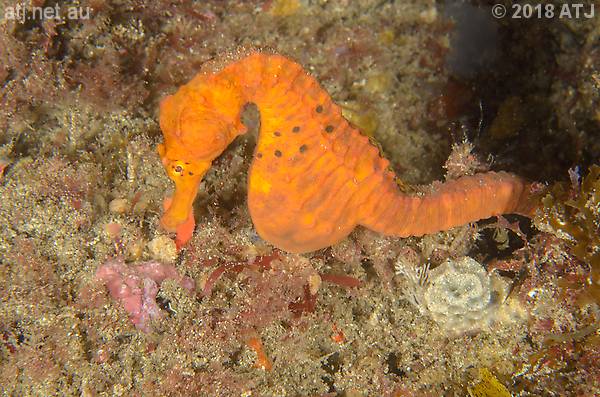
Female pot-bellied seahorse, Hippocampus abdominalis, ("Ginger"). 12.3 m.
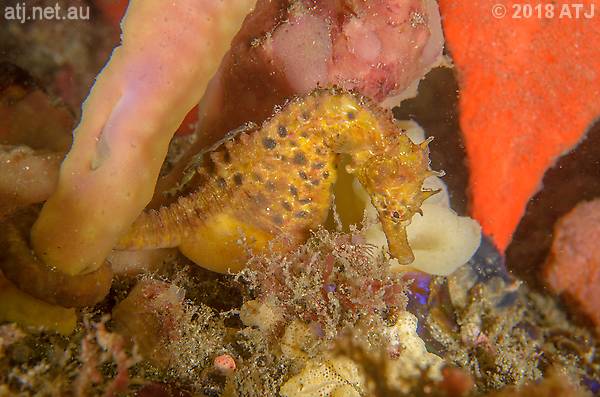
Male pot-bellied seahorse, Hippocampus abdominalis, ("Gilligan"). 12.2 m.
We moved along slowly along the bottom of the wall. This was my last chance to find a weedy seadragon for Louw. I'd seen the juvenile here before so there was hope. Just before I reached the end of the wall I spotted the juvenile weedy seadragon. I was so pleased. I pointed it out to Louw and I think she nearly died. Even though she was low on air she kept with it taking photographs and videos. I thought I'd have to drag her away and eventually I did.
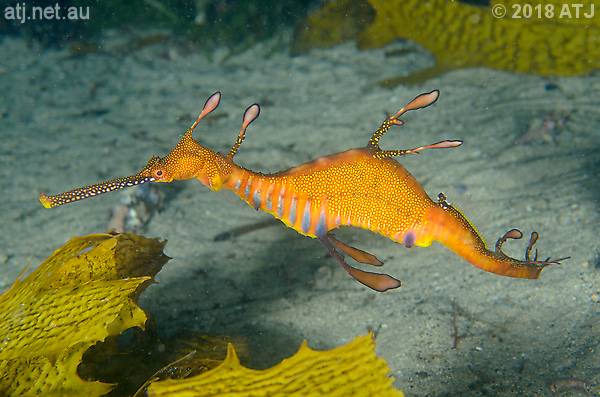
Juvenile weedy seadragon, Phyllopteryx taeniolatus. 12.5 m.

Juvenile weedy seadragon, Phyllopteryx taeniolatus. 12.4 m.
We had one last stop at the orange red-fingered anglerfish just the the south-east of the Deep Wall. I showed it to her, she took some photographs and we headed for the exit.
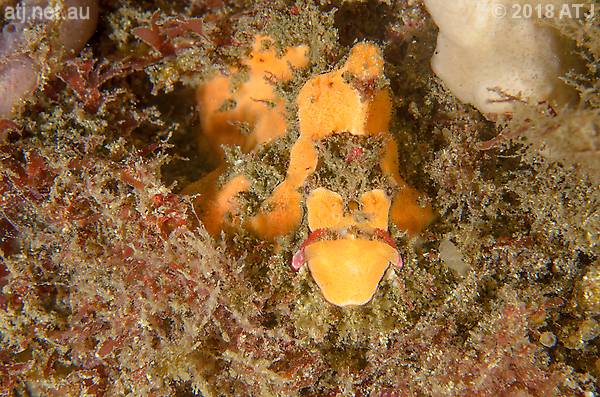
Red-fingered anglerfish, Porophryne erythrodactylus. 12 m.
We swam up to 5 metres and then swam along the shore towards The Steps to the exit point while we were doing our safety stops. We got to the exit point and ascended onto the shelf and stood up. It was a very easy exit.
I was so relieved to have shown Louw everything I had promised and I think she had a good dive.
Camera gear
Camera
Nikon D7000
Lens
Nikon AF-S Micro Nikkor 60mm f/2.8G ED
Housing
Ikelite 6801.70
Lens port
Ikelite Flat Port 5502.41
Strobe
2 x Ikelite SubStrobe DS161